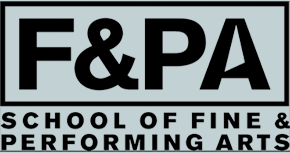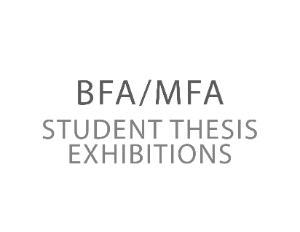
.
BFA/MFA Thesis Exhibitions Fall 2003
Curated by graduating seniors and museum staff
December 5–17, 2003
Alice and Horace Chandler Gallery & North Gallery
At the end of each semester, students graduating with Bachelor of Fine Arts or Master of Fine Arts degrees exhibit art work created as part of their thesis projects in the museum's west wing. Exhibitions are designed and installed by the students, under the supervision of the Curator of Exhibitions and the museum Preparator.
BFA/MFA I: Nuchavadi Bamrungtrakun, Jessica Beechler, Boo Yun Choi, Virginia Detjen, Giovanna Feola, Jacob Goble, Rebecca Hyde, Hwa Jeon, Corinne LaScala, Chris Maffeo, Sophia E. Phan, Jen Rog, Sharon Stelluto, Lea Tyler
BFA/MFA II: Michael Bonasio, Daniel Poole-DiSalvo, Noah R. Grussgott, Allison M. Hand, Youn Jung Kim, Nadine Malivers, Marissa Marzullo, Jess McCormick, Juan Garcia Nunez, Christian Routh, Scarlet Duba, Daniel Matuk, Jackeline Martinez, Nick Schneider, Shannon Stapleton-McKinzie, Michelle Tinner, Jason Torres
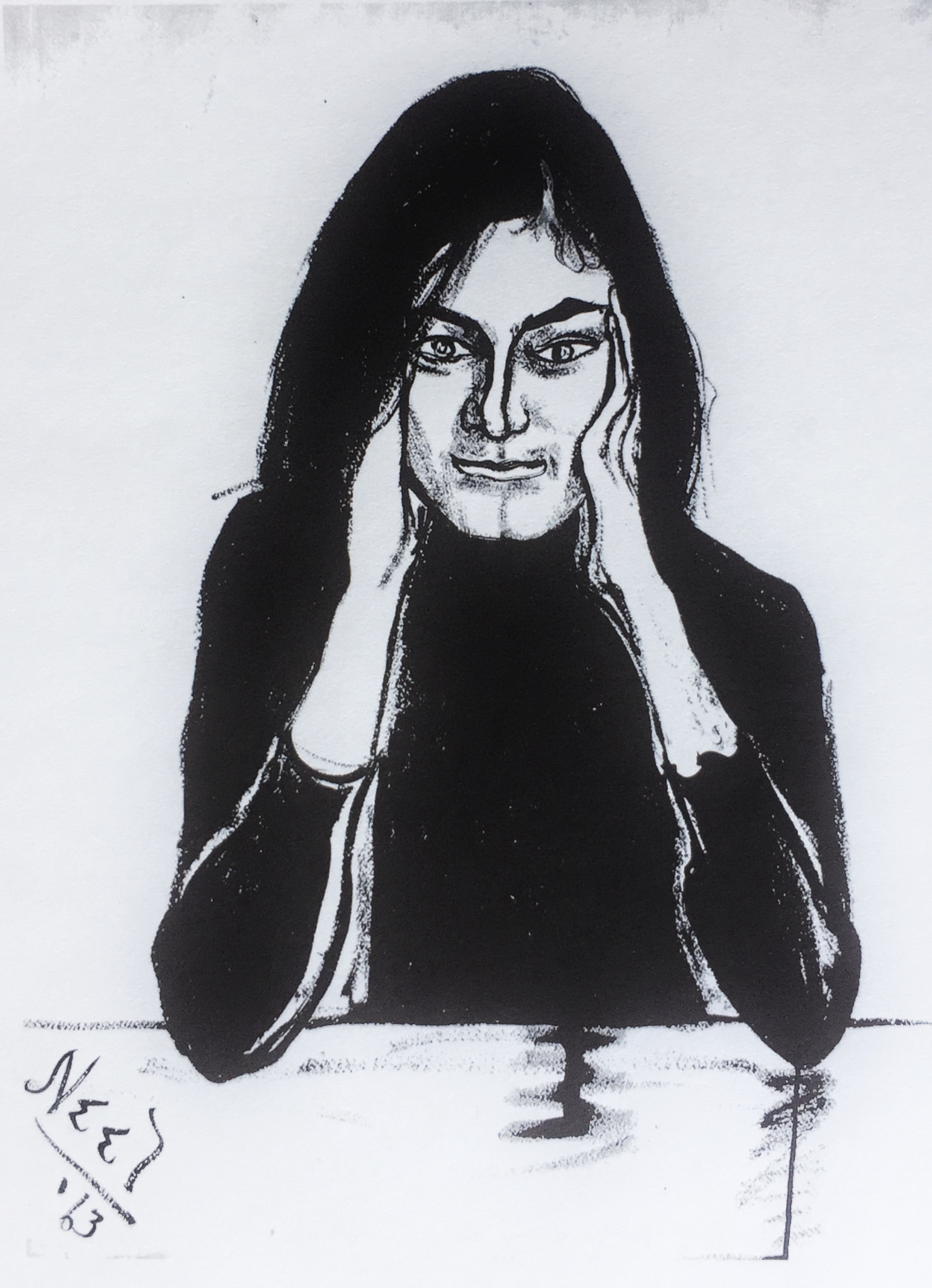
Alice Neel, Bonnie Bremser, 1963, ink on paper, collection of Mr. and Mrs. Howard Wagman, New York
Alice Neel's Feminist Portraits: Women Artists, Writers, Activists and Intellectuals
Curated by Denise Bauer and Karl Willers
October 14 – November 23, 2003
Alice and Horace Chandler Gallery
Alice Neel appeared to burst on the scene in the 1970s with her riveting portraits of public figures like her towering image of Bella Abzug (1975). Despite being a regular in New York City's art world in the 1930s, it wasn't until the 1970s that Neel began to gain mainstream visibility when her colorful life story, ebullient personality, and passion about showing her work began to attract the media's attention. The increased attention paid to Neel and her work in the 1970s is attributed commonly to the rise of Second Wave feminism, an association made explicit through Neel's outspoken activism in support of women's rights. In fact, Neel had an ambivalent and rather complex relationship to feminism that is evident in her portraits of leftist women artists, intellectuals, and writers and in the other portraits of women she painted and drew from the 1930s to the 1980s. Neel portrayed some of the most interesting and compelling American women of the twentieth-century. In some of her portraits of ordinary women (whom she met on the street or who were her neighbors and friends), Neel explored such chronic female hardships as domestic violence, child abuse, and poverty. She also frequently explored race and class differences between women and was consistently critical of white privilege, often through the use of parody and humor, in ways that contemporary feminists have only recently begun to explore. By looking closely at Neel's portraits of women as a category of their own, we can uncover this neglected legacy of her work and gain a more complex understanding of Neel's politics and relationship to feminism.
– Adapted from Denise Bauer, "Alice Neel's Feminist and Leftist Portraits of Women," Feminist Studies (Summer 2002), pp. 375-76.
This exhibition was held in association with Women and Social Action, the 2003 Women's Studies conference at the State University of New York, New Paltz.
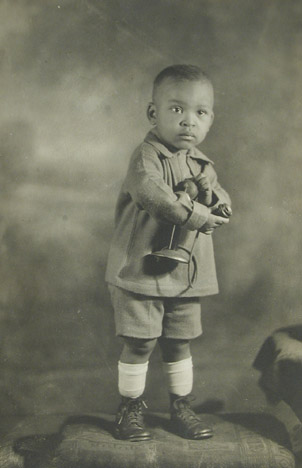
James Van Der Zee, Portrait of Boy Holding Telephone, 1925, vintage gelatin silver print, gift of Howard Greenberg, 2002.076.030
The Photographs of James Van Der Zee
Curated by Neil C. Trager
October 14 – November 23, 2003
North Gallery
For over 60 years, African American photographer James Van Der Zee (1886-1983) worked in obscurity as he made a visual record of life in New York City's Harlem neighborhood. Through his sensitive and moving images, he captured the likes of both the famous and the ordinary residents of this community. His meticulous darkroom techniques allowed him to not only present his community at its best for posterity but to add a psychological and ethereal dimension to many of his everyday images.
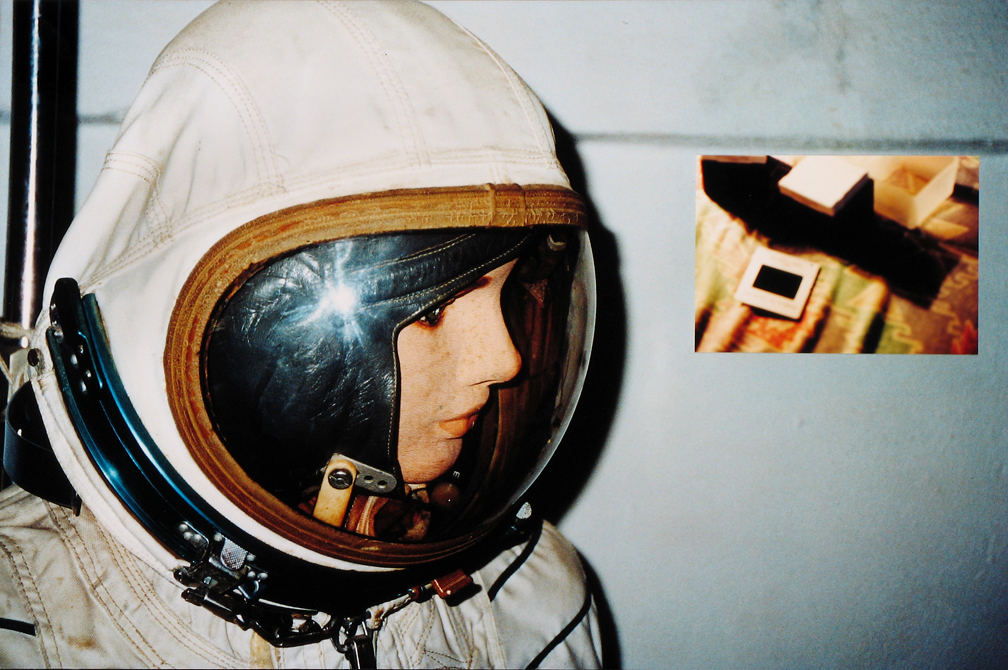
Ernesto Leal, Untitled [head of astronaut mannequin from "Guided Tour" series], 2000, c-print, mixed media, gift of the artist, 2004.003.001
Utopia/Post-Utopia: Conceptual Photography and Video From Cuba
Curated by Helaine Posner
July 12 – August 10, 2003
East Wing Galleries
Nine photographers and video artists on the cutting edge of the Cuban art scene exhibit their work in Utopia/Post-Utopia: Conceptual Photography and Video from Cuba. An illustrated catalogue with essays by guest curator, Helaine Posner and art critic, Eugenio Valdés Figueroa are inlcuded in the publication. The nine artists included are: Tania Bruguera, Raúl Cordero, Carlos Garaicoa, Luis Gomez, Ernesto Leal, Elsa Mora, René Peña, Manuel Piña, and Sandra Ramos.
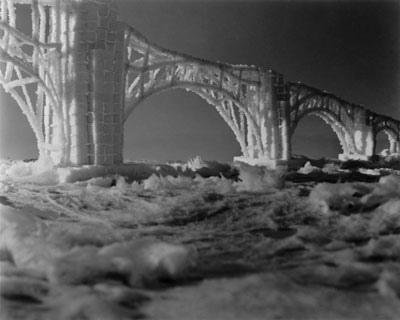
Laura Gail Tyler, Untitled, 2001, Gelatin silver print, courtesy the artist
Hudson Valley Artists 2003: Out of the Studio
Curated by Karl Willers
June 21 – August 10, 2003
Alice and Horace Chandler Gallery & North Gallery
Each summer, the Samuel Dorsky Museum of Art at SUNY New Paltz mounts an exhibition of emerging, mid-career, or under-recognized Hudson Valley artists. This year, several prominent and established artists in the New Paltz area have been asked to recommend an artist who lives and works in the region for exhibition. For this look at contemporary Hudson Valley artists, the painter Jake Berthot of Accord selected the painter Ruth Leonard of Cairo; the photographer Lynn Davis of Hudson chose the photographer Chad Kleitsch of Rhinebeck; the painter Al Held of Boiceville nominated the painter Gene Benson of New Paltz; the painter Al Loving of Kerhonkson picked the painter Ralph Fleming of Kerhonkson; the sculptor Judy Pfaff of Kingston designated the photographer Laura Gail Tyler of Tivoli; and the sculptor Martin Puryear of Accord proposed the sculptor and painter Jonah Meyer of Kingston.

.
BFA/MFA Thesis Exhibitions Spring 2003
Curated by art faculty and students
April 26 – May 21, 2003
Alice and Horace Chandler Gallery & North Gallery
At the end of each semester, students graduating with Bachelor of Fine Arts or Master of Fine Arts degrees exhibit art work created as part of their thesis projects in the museum's west wing. Exhibitions are designed and installed by the students, under the supervision of the Curator of Exhibitions and the museum Preparator.
Nancy Accomando | Lauren Agresti |Sean Brix | Timothy Clayton Brown | Stephanni Cairl | Karen Capobianco | Myung Jin Choi | Lacey Haden Fekishazy |Anthony Festa | Michael Gancarz | Davette Glover | Joseph Juriga | Gregory Kollar | Hester Keith | Pamela Lee | John Joseph Lepore | Eija Lindsey | Kathryn Long | Allison Morelle | Amy Mottola | Kelli Newton | Chunsoo Park | Molly Rausch | Jason Repolle | Yannie Song | Anne Starr | AnnMarie Tedeschi | Tamar Thibodeau | Timothy Urban | Glenyce Walker | Emily Watson
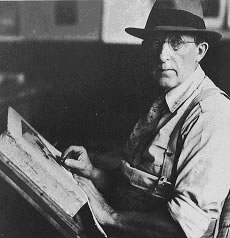
Bolton Brown, drawing his lithograph, The Bowl, 1925, courtesy Tisanne Gardner
Bolton Coit Brown: A Retrospective
Curated by Neil C. Trager
April 5 – June 15, 2003
Morgan Anderson Gallery and Howard Greenberg Family Gallery
Bolton Coit Brown and the Woodstock Legacy
Bolton Coit Brown (1864–1936) was a remarkable man, driven by a single-minded obsession to excel at and master whatever he undertook to accomplish. This determination and ambition first manifested itself during his undergraduate and graduate studies at Syracuse University, and later in his position administering the art program at Stanford University in California (1891–1902), where, in addition to his fame as a teacher, he earned national recognition as a skilled mountaineer. It was one hundred years ago that, on behalf of Ralph Whitehead, a wealthy Englishman who was seeking to establish a utopian Arts and Crafts community, Bolton Brown left California in search of the perfect location. Poet Hervey White, creating the triumvirate of utopians that would eventually establish the Byrdcliffe Arts and Crafts Colony in Woodstock, New York, soon joined Whitehead and Brown.
Brown left California in the winter of 1902, and traveled east ultimately arriving in Windham, New York, a small town north of Woodstock. From there he set out, primarily on foot, to explore the Catskill Mountains. After what is described in his journals as a challenging and arduous journey (even for a mountaineer of his experience and skill) he eventually found himself on the north side of Mount Overlook (in Woodstock), which he recognized immediately as the site, he was searching for. It was there that according to Brown "that the story of modern Woodstock really begins."
In 1915, at the age of 50, Brown went to England to learn lithography, which he essentially taught himself. His quest for perfection led him to design and fabricate his own rollers, crayons, and graining techniques, all in service of his demanding artistic vision. He approached his chosen craft with what is best described as a missionary zeal. It was Brown's intention to resurrect in America the long-revered European tradition of expressive printmaking and the central role of the "master printer" in that process. Brown's intense personal investigation into lithography as an artist and a technician led to his authoring two books on the subject, inventing formulas for more than 500 crayons, and developing morel than 50 different techniques to prepare stones, which allowed the artist control over the medium heretofore not available.
It is his unique artistic and technical contributions to American printmaking that has created the impressive legacy that rightfully earns Bolton Coit Brown long overdue recognition. On the occasion of the centenary of the founding of the Byrdcliffe Arts and Crafts Colony, it seems fitting that we honor Bolton Coit Brown and celebrate his long overlooked and under appreciated contributions to American art history, and once again bring his work before the public to be critically addressed, shared, and appreciated. It is Brown's unique and formidable contributions to American printmaking, as well as the seminal role that he played in bringing the arts to Woodstock, that first captured my interest in the artist and which ultimately became the primary impetus for this exhibition.
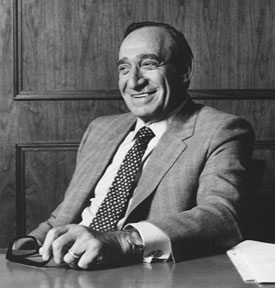
Samuel Dorsky
Faculty Art
Curated by Karl Willers
February 12 – April 13, 2003
Alice and Horace Chandler Gallery & North Gallery
Artists are influenced by a wide variety of sources. In this exhibition SUNY New Paltz studio art faculty will exhibit works of art that they have created, along with objects that have influence and inspired them, enabling viewers to gain insight into the creative process. The exhibition celebrates the rich diversity of vision and the artistic sensibilities that distinguish the art department faculty.
Participating artists: Robin Arnold | Joan Barker | Jamie Bennett | Linda Casbon | Rimer Cardillo | Amy Cheng | John Cogswell | Jeff Crane | François Deschamps | Mark Dorrance | James Fossett | Anne Galperin | Mary Hafeli | Ayumi Horie | Dong-Keun Jang | Eunkyung Jeong | Sergey Jivetin | Carmen Lizardo | Clifton Meador | Susan Miiller | Myra Mimlitsch-Gray | Judith Mohns | Wayne Montecalvo | Itty Neuhaus | Gabriel Phipps | Joseph Ramos | Kristin Rauch | Mary Roehm | Thomas Sarrantonio | Suzanne Stokes | Suzy Sureck | Pamela Wallace | Ruth Wetzel | Alice Wexler | John Williams
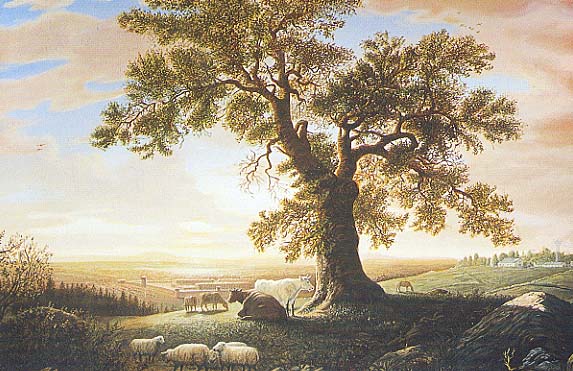
Sandow Birk, Shawangunk Correctional Facility — Wallkill, New York, 2002, oil and acrylic on canvas, courtesy the artist
Sandow Birk: Incarcerated
Curated by Wayne Lempka
January 29 – March 9, 2003
Sara Bedrick Gallery
Sandow Birk works at the juncture of historical myth and contemporary banalities, with a focus on complex social issues. Incarcerated is an exhibition of landscape paintings of New York State maximum security prisons in the tradition of the Hudson River School, a series commissioned by Debs & Co. Gallery in New York City. Included are 12 of the 15 works Birk produced for the series.
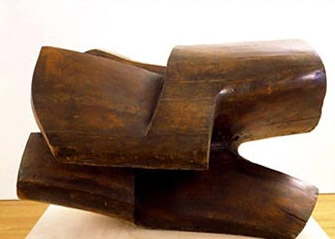
Raoul Hague, Wallkill Walnut, 1964, walnut, courtesy the artist
Reanimating Matter: Raoul Hague's Sculptures and Robert Frank's Photographs
Curated by Neil Trager
January 23 – March 9, 2003
Morgan Anderson Gallery
A comprehensive survey exhibition featuring Hague's large-scale abstract sculptures carved from tree trunks, accompanied by photographs of the work and artist by Robert Frank Hague's interaction with the massive trees that were his chosen material, result in a compelling body of in-the-round sculpture inspired by both nature and the human body.

.
BFA/MFA Thesis Exhibitions Fall 2002
Curated by graduating seniors and museum staff
December 6 – 18, 2002
Alice and Horace Chandler Gallery & North Gallery
At the end of each semester, students graduating with Bachelor of Fine Arts or Master of Fine Arts degrees exhibit art work created as part of their thesis projects in the museum's west wing. Exhibitions are designed and installed by the students, under the supervision of the Curator of Exhibitions and the museum Preparator.
Sarah Ann Brand | Geneviéve Canale | Cristina Carlstein-Reyes | Robert M. Carroll | Juan E. Chio | Seon Adrian Crawford | Erin Elizabeth Dennis | Sarah Adeline Elliott | Kari Giordano | Marcy K. Goedeke | Caryn Gray | Kristopher Hedley | Elizabeth Insogna | Wendy Kennealy | Erin La Bate | Eunho Lee | Casey Lynch | Gretchen Nau | Leslie Porcelli | Andrea Wenglowskyj | Dawn Donahue Ward
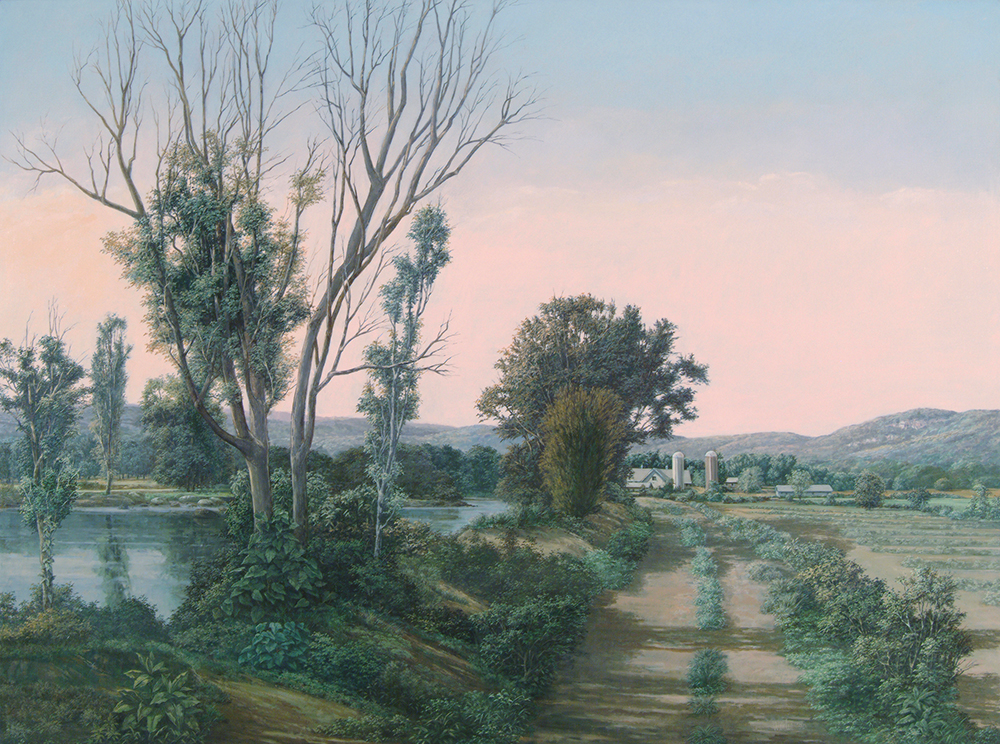
George Wexler, View From the Dietz Farm, 1990, oil on canvas, gift of the artist, 2002.064
Reading Objects 2002
Curated by Nadine Wasserman and the Dorsky Museum staff
October 30 – December 22, 2002
Sara Bedrick Gallery
An interdisciplinary collection-based exhibition featuring selections from the museum's world study collection accompanied by interpretive label copy created by faculty from departments and schools across the campus.
Faculty participants include Elisa Davila, Simone Federman, Phyllis R. Freeman, Linda Greenow, Susan Ingalls Lewis, Ann Lovett, Douglas C. Maynard, Rose Rudnitski, Kristin Rauch, Jan Zlotnik Schmidt, John Sharp, Stacie Swingel Nunes, Richard J. Reif, Pauline Uchmanowicz, John Vander Lippe, and Sheila Yoshpe.
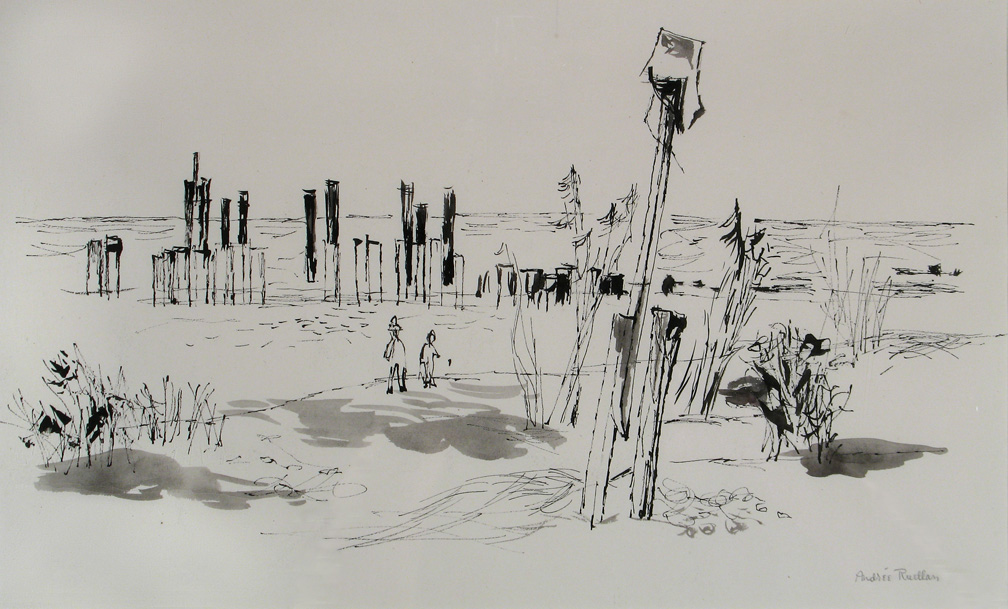
Andrée Ruellan, Shell Beach, n.d. (20th century), ink on paper, by transfer from the Memorial Art Gallery of the University of Rochester
Andre Ruellan: Selected Drawings 1920–1970
Curated by Neil Trager
October 12 – December 20, 2002
Howard Greenberg Family Gallery
Drawings done in a variety of media, spanning a creative legacy of almost fifty years (1920-1970), by the Woodstock-based painter.
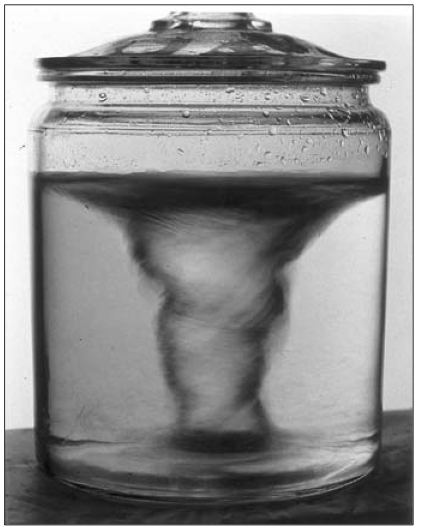
David Goldes, Jar, 1998, silver gelatin print, courtesy Yossi Milo Gallery, New York
Complexity: Art and Complex Systems
Curated by Ellen K. Levy and Philip Galanter
September 14 – November 24, 2002
Alice and Horace Chandler Gallery & North Gallery
Complexity: Art and Complex Systems is the second major museum exhibition about complex systems. It creates bridges across many branches of science and also offers a revolutionary intellectual vector that has ramifications for other disciplines such as art and philosophy.
Included are prescient early works by Hans Haacke and Steina Vasulka that anticipated current science, plus contemporary works by Mauro Annunziato, Manuel Baez, Jonathan Callan, Remo Campopiano, Guy Marsden & Jonathan Schull, Nancy Chunn, Janet Cohen, Philip Galanter, Frank Gillette, David Goldes, Paul Hertz, Ellen K. Levy, Brian Lytel, Daro Montag, Jack Ox, Daniel Reynolds, Marianne Selsjord, John Simon Jr., Karl Sims, Nell Tenhaaf, and Leo Villareal.
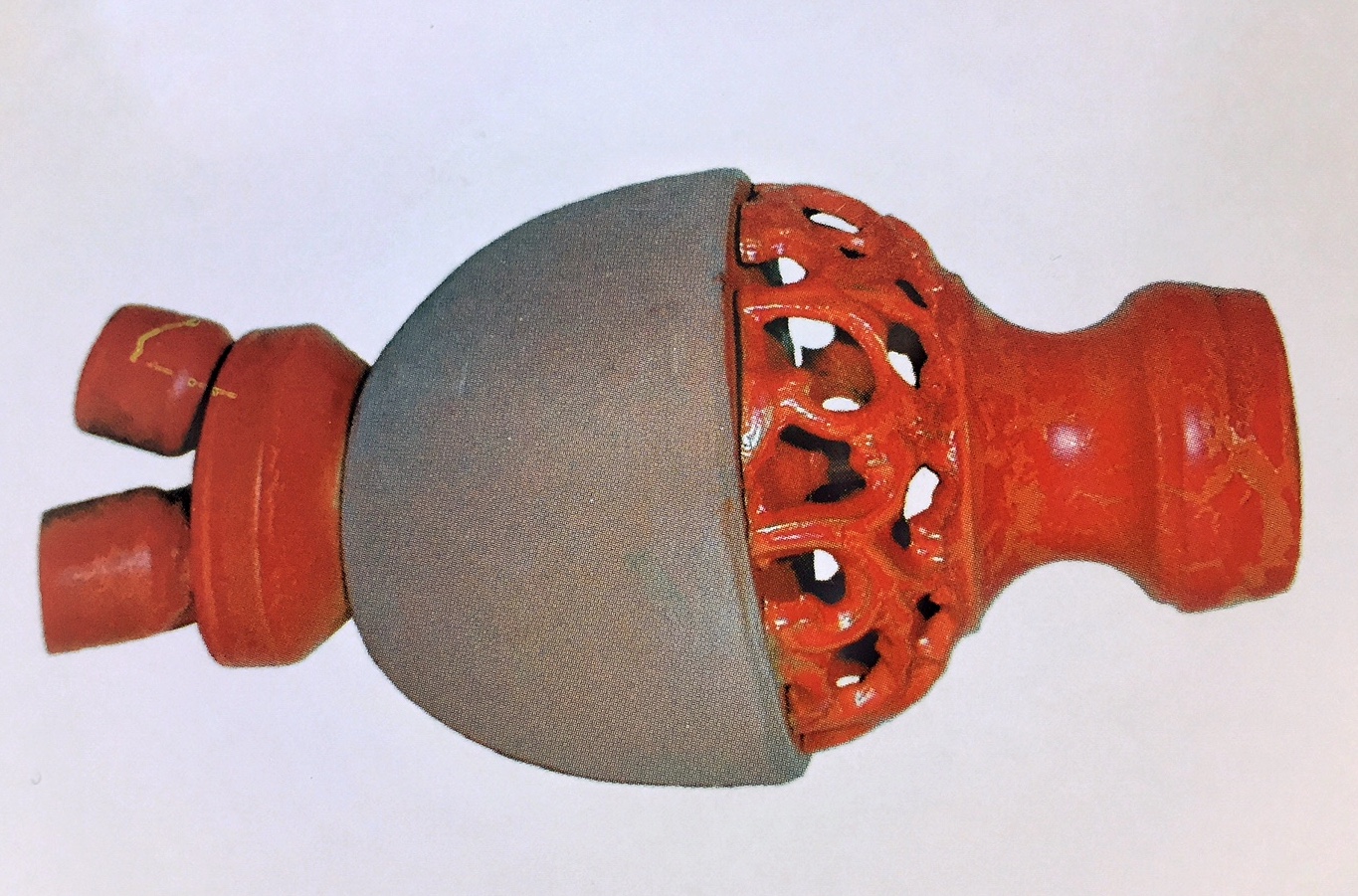
Don Porcaro, Art-or-Fact #24, 2002, stone, metal, and rubber, courtesy the artist
Don Porcaro: Oracle / Leslie Wayne: Love In the Afternoon
Curated by Nadine Wasserman
August 3 – September 20, 2002
Sara Bedrick Gallery
A collaborative installation juxtaposing Don Porcaro's sculpture with Leslie Wayne's paintings. There is a visual frisson to the way Wayne's paintings and Porcaro's sculptures relate in terms of their size, tactility, and range of color. However, their works have a conceptual kinship as well. Both artists make reference to literal and metaphoric excavations as a method of discovery. They seem to question that old adage "seeing is believing" by letting our eyes play tricks on us.
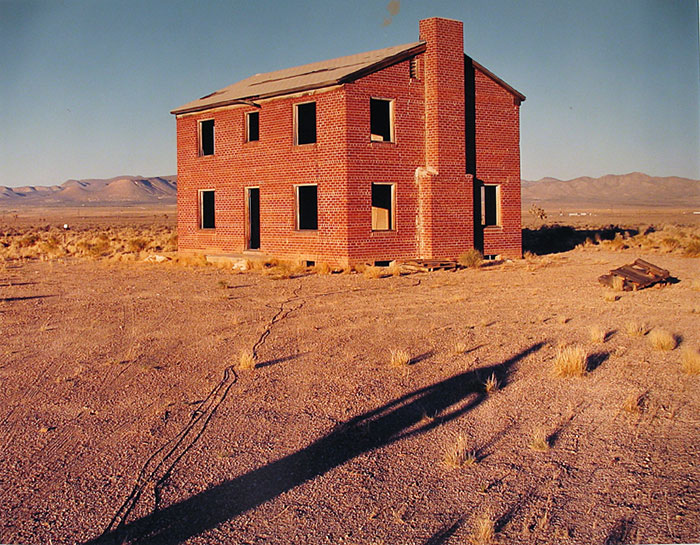
David Graham, Untitled (house), from the series "In Defense of America," 1988, 2002.075.015
In Defense of America: Photographs by David Graham
Curated by Neil C. Trager
June 22 – September 20, 2002
Howard Greenberg Family Gallery
A haunting, beautiful, and at time humorous photographic portrait of the nuclear test sites at Frenchman and Yucca Flats, Nevada. Graham created the portfolio in 1988 to accompany a congressional report on the relative safety of contemporary nuclear weapons testing techniques in the United States.
"In 1988 I was asked to provide photographs for a congressional report on the relative safety of contemporary nuclear weapons testing techniques. Was I a specialist on this subject at this time? Doubtful. I hadn’t even thought of the subject in recent memory. I was asked because of my reputation as a photographer of the odd and semi-unusual. I was assured that with craters the size of Yankee Stadium and motel bits strewn about the desert, oddity was in the offing. I was not disappointed.
As part of the congressional report, I, fortunately, only photographed the construction and not the destruction of one of these tunnels. As it was, there was great concern for my presence. I had a guide, a photographer from the Test Site to take Polariods, and a scientist to pre-clear them on the spot. I then handed over the film which the Department of Defense developed, proofed, and cleared before I could see it. On my second trip to the tunnels in 1989, I was not allowed to actually take the pictures but to only direct them. Ultimately, these pictures were never cleared."
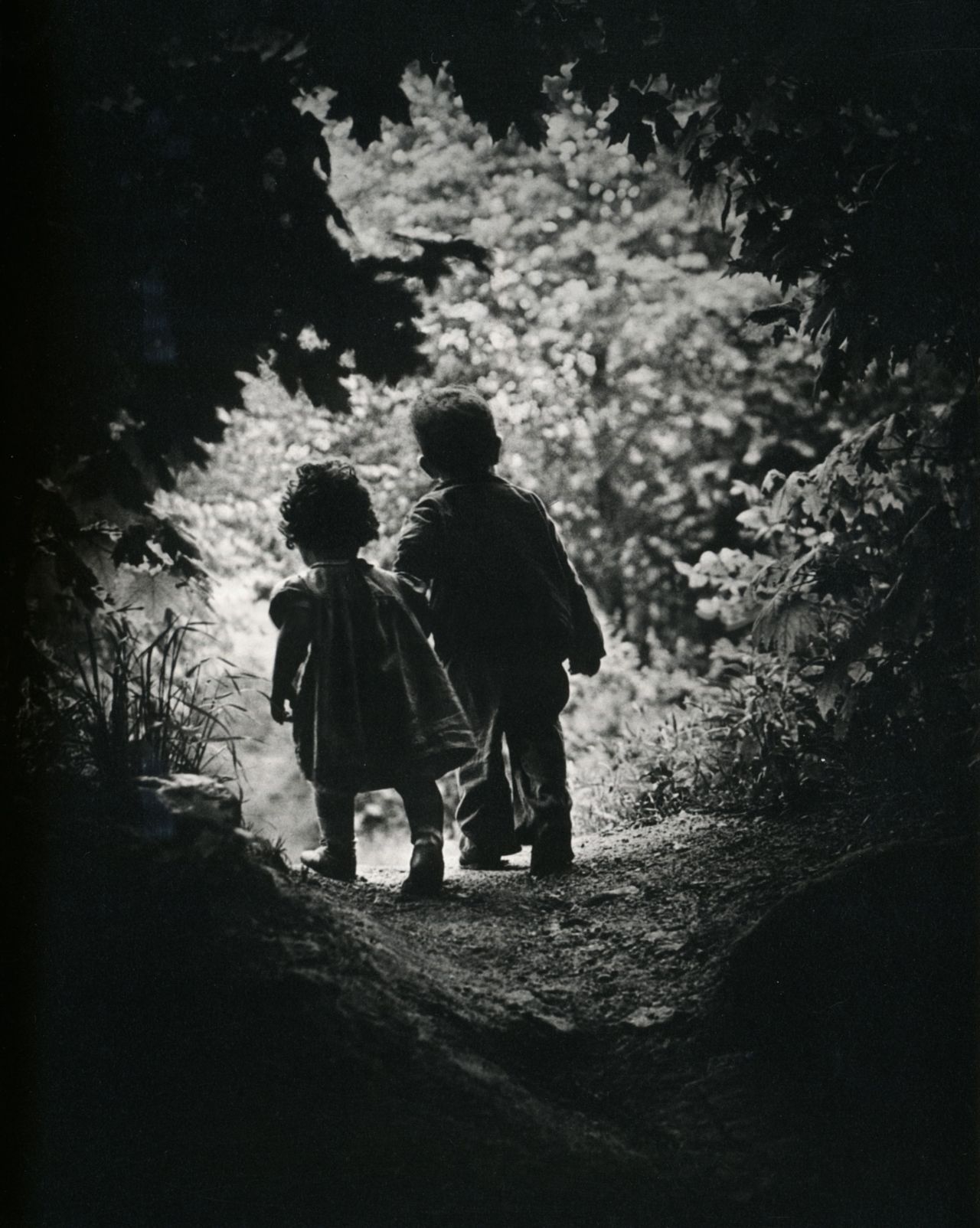
W. Eugene Smith, The Walk to Paradise Garden, 1947, gelatin silver print, collection of Patrick & Phyllis Smith
W. Eugene Smith: Selections from the Classic Photographic essays
Curated by Wayne Lempka
June 22 – July 27, 2002
Sara Bedrick Gallery
This exhibition includes a selection of images from some of W. Eugene Smith's most noted photographic essays, many done for Life Magazine. Highlights include the photographs World War II, Country Doctor, Nurse Midwife, Spanish Village, A Man of Mercy, and Pittsburgh.
Smith (1918-1976) is hailed as a master of documentary photography and the photographic essay. His images were considered the mainstay of Life Magazine, and many of them have gone on to become classic images in the history of photography.
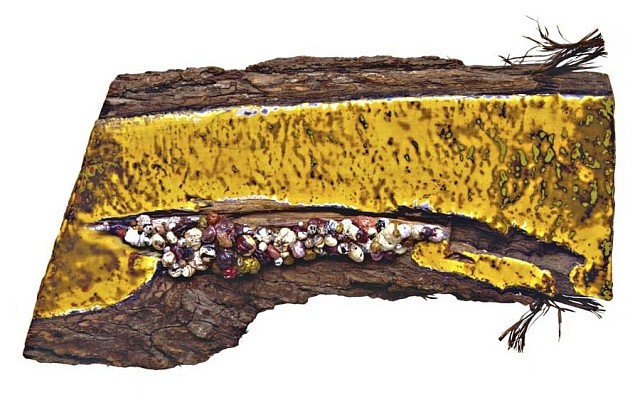
Laura Moriarty, Trench, 2002, encaustic and compressed paint clusters on red maple slab, courtesy the artist
Hudson Valley Artists 2002
Curated by Sydney O. Jenkins
June 22 – August 23, 2002
Alice and Horace Chandler Gallery & North Gallery
The museum's annual regional juried exhibition, featuring the work of emerging and mid-career artists living and working in the mid-Hudson Valley and Catskill region, this year juried by Sydney O. Jenkins, Director of the Galleries at Ramapo College, New Jersey.
Artists included: Glenn Abel, Joan Ade-Edelman, Helmut Amann, Peter Benzing, Josephine Bloodgood, Kaete Britten-Shaw, Marcia Cristina Brusca, Allen Bryan, Peter Clapper, Marcia Clark, Marie Cole, Ferris Cook, Sandra Cranswick, Renzo D'Anselmi, Jason D'Aquino, Thyra Davidson, Mark DeLura, Richard Deon, Priscilla Derven, Hendrik Dijk, Lynn Dreese Breslin, A.L. Dubois, Donise English, Stephen Fabrico, Staats Fasoldt, Jim Fawcett, Deborah Goldman, Trina Greene, Sarah Greer-Mecklem, Peter Harrison, David Holt, Helen Hosking, Kathryn Hunter, Jodiah Jacobs, Oren Klaus, Barbara Kilpatrick, Peter J. Krobath, Christopher Kurtz, Lawrence Lewis, Michael Mahar, Dan McCormack, Elin Menzies, Joan Monastero, Laura Moriarty, Seth Nadel, Jenny Nelson, Suzanne Neusner, Franc Palaia, Carol Pepper-Cooper, Matthew Pleva, Elisa Pritzker, Susan Quasha, Pat Quinn, Susan Raney, Tilman Reitzle, Cindy Sammis, Marian Schoettle, Craig Shankles, Marina Shternberg, Phil Sigunick, Fran Smulcheski, Shawn Snow, Peter Tassone, Amanda Wachob, Marlene Wiedenbaum, Cynthia Winika, John Wolfe, Stephen Zaima
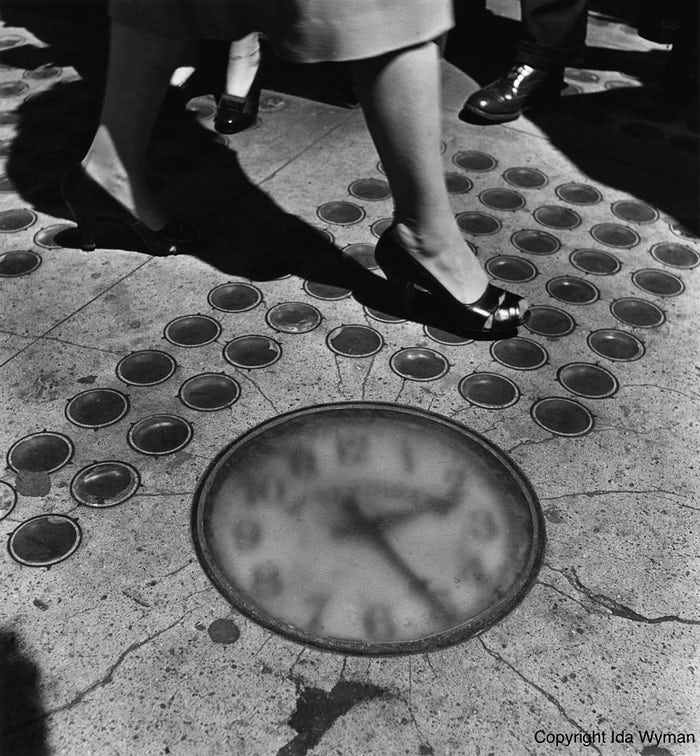
Ida Wyman, Sidewalk Clock, NYC, 1947, gelatin silver print, Center for Photography at Woodstock permanent print collection
Center for Photography at Woodstock: 25 Years of Imaging
Curated by the students of the Museum Studies class
June 22 – August 23, 2002
North Gallery
A series of three student curated exhibitions developed under the direction of Nadine Wasserman, Wayne Lempka, and Neil Trager, to commemorate the 25th anniversary of the creation of the Center for Photography at Woodstock (originally the Catskill Center for Photography). These thematic exhibitions feature work by regional artists represented in the collection, which came to the SDMA in 1995 through the creation of a community-based partnership with CPW.
Past to Present: Recent Acquisitions, Promised Gifts, and Selected Loans 1998–2002
June 22 – September 20, 2002

.
BFA/MFA Thesis Exhibitions Spring 2002
Curated by graduating seniors and museum staff
April 26 – May 22, 2002
Alice and Horace Chandler Gallery & North Gallery
At the end of each semester, students graduating with Bachelor of Fine Arts or Master of Fine Arts degrees exhibit art work created as part of their thesis projects in the museum's west wing. Exhibitions are designed and installed by the students, under the supervision of the Curator of Exhibitions and the museum Preparator.
Tiila Abbitt | Jaimie Beach | Tom Blake | Sarah M. Brainard | Curtis Bohmer | Scott Christie | A-Young Chung | Jin Won Chung | David Churchill | James Corbin| Peter Demuth | Sheri DuMont | Julie Edelson | Bethany Ellison | Thomas Fielder | Christina Flanigan | Markian Galandiuk | Shawn Galvin | Pamela Gordon | Kyle Howard | Hyojin Ju | Yevgeniya Kaganavich | Nathaniel Kassel | Shinobu Kawamura | Bridget Lanigan | Heather Layton | Cynthia Levine | Daryl Litts | Heidi Lowe | Kerry Mills | Yuriko Miwa | Marika Miya |Beth Palmer | Brian Petrocelli | Tara Rainstrom | David Robinowitz | Shella Robinson | Sakurako Shimizu | Kala Stein | Alison Tracy
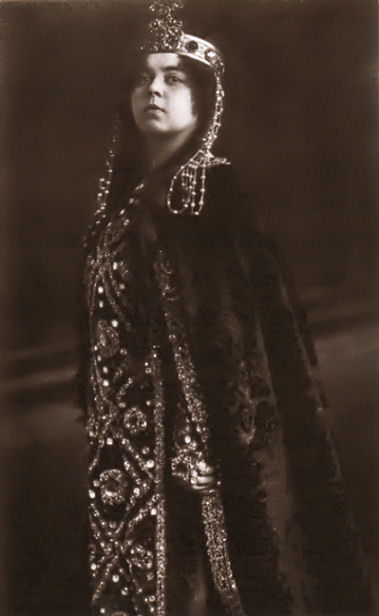
Leonore Schwarz Neumaier as Ortrud (Lohengrin), Frankfurt Opera, ca. 1919, courtesy of Jüdisches Museum Frankfurt
Leonore Schwarz Neumaier: A Voice Silenced
Curated by Nadine Wasserman
April 6 – May 18, 2002
Sara Bedrick Gallery
This exhibition depicts the life of the Viennese-born Frankfurt opera singer, Leonore Schwarz Neumaier, who was killed by the Nazis at Majdanek concentration camp in Poland in 1942.
The story is told with photographs of Leonore Schwarz in the roles she sang with opera companies in Graz, Nuremberg, Magdeburg, and Frankfurt am Main. The exhibition is augmented with interpretive works, documents, and a collection of family snapshots taken by her son John which reflect the values and experiences of a young Jewish boy growing up in Nazi Germany. There are also opera posters and programs of concerts organized by Jewish groups in the 1930s after the Hitler regime forced the isolation of Jewish artists.
A Voice Silenced was created by Diane Leonore Neumaier, professor of art at Rutgers University, in collaboration with her father, Dr. John J. Neumaier, emeritus professor of philosophy and former president of the State University of New York at New Paltz.
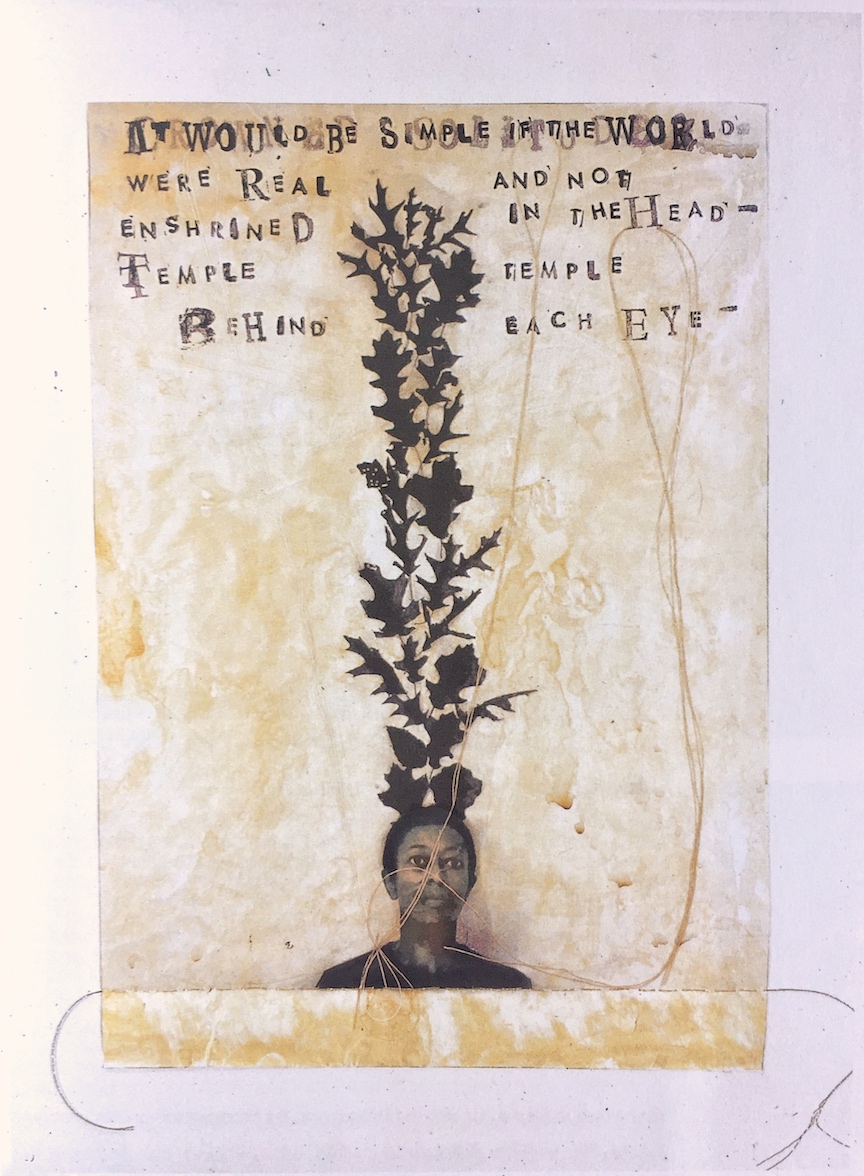
Lesley Dill, Word Crown, 2000, silver gelatin print, ink, thread, wax, courtesy George Adams Gallery, New York
Lesley Dill: A Ten Year Survey
Curated by Nadine Wasserman
March 9 – April 21, 2002
Alice and Horace Chandler & North Galleries
It is impossible to categorize Lesley Dill. She is at once a painter, printmaker, sculptor, photographer, and performance artist. Working both small and large, she shifts with ease from the intimacy of a book to the far more public format of a billboard. But no matter what the size or medium, Dill continues to explore the elusive boundaries between mind, body, and spirit. One of the most identifiable facets of her work is the way she examines the function of language and its relationship to the physical. In 1990 Dill was given a book of Emily Dickinson's poems and, for her, it was like a revelation. Since then, language has played a major role in her artwork. Words, at times legible and at times illegible, spill from mouths, are written across bodies, and cascade from body parts. Language bridges the private world of thought with the public discourse of shared experience, and Dill uses it in combination with image to evoke the spiritual content of human experience.
This exhibition, the second in an annual exhibition series that highlights the work of prominent artists who currently live and work in the Hudson Valley and Catskill regions, presents important work from the last ten years that demonstrates Dill's depth of subject matter as well as her breadth of creativity.
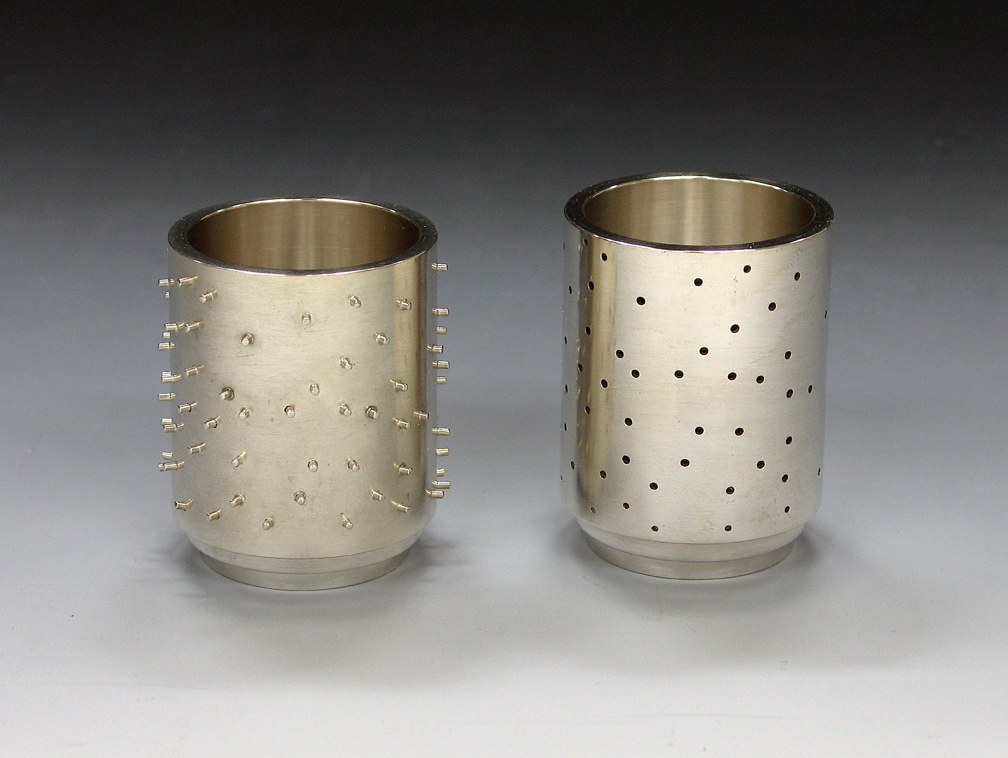
Brigid O'Hanrahan, Textured Cups, 1986, silver, gift of the artist, 2002.021a&b
Markers In Contemporary Metals
Curated by Jamie Bennett and Myra Mimlitsch-Gray
January 30 – March 15, 2002
Sara Bedrick Gallery
This exhibition, developed from the Dorsky's permanent collection and augmented with important loans by notable artists, teachers, and mentors in the field addresses the intellectual and aesthetic influences that formal education has had on the art and craft of metalsmithing. The artists in Markers represent a closely-knit group of practitioners whose shared academic experience, while genealogically succinct, reveals an impressive breadth of individual creative expression. For some, the body is the locus for physical, visual and conceptual engagement, whether through jewelry or objects. Others negotiate historical and contemporary concepts related to the nature of utilitarian objects. The exhibition enables the viewer to consider how objects are marked by their associations, by the intent of the artist, and by their existence in a particular time and context.
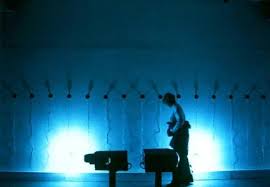
Sükran Aziz, American Alphabet, 1999, sound/light installation, Stephen Gang Gallery, NYC
Faculty Art
Curated by Nadine Wasserman
January 30 – February 24, 2002
Alice and Horace Chandler Gallery & North Gallery
Artists are influenced by a wide variety of sources. In this exhibition SUNY New Paltz studio art faculty will exhibit works of art that they have created, along with objects that have influence and inspired them, enabling viewers to gain insight into the creative process. The exhibition celebrates the rich diversity of vision and the artistic sensibilities that distinguish the art department faculty.
Participating Artists: Felipe Ariza, Robin Arnold, Sükran Aziz, Joan Barker, Jamie Bennett, Melissa K. Braggins, Rimer Cardillo, Amy Cheng, John Cogswell, Jeff Crane, François Deschamps, Cynthia Dill, Ed Felton, James Fossett, Kathy Goodell, E. K. Jeong, Jeff Johnson, George Laws, Carmen Lizardo, Ann Lovett, Clifton Meador, Aura Messé, Susan Miiller, Myra Mimlitsch-Gray, Wayne Montecalvo, Itty Neuhaus, Joe Ramos, Kristin Rauch, Mary Roehm, Thomas Sarrantonio, Lisa Stinson, Suzanne Stokes, Suzy Surek, Pamela Wallace, Ruth Wetzel, Alice Wexler, John Williams

.
BFA/MFA Thesis Exhibitions Fall 2001
Curated by graduating seniors and museum staff
November 30 – December 11, 2001
Alice and Horace Chandler Gallery & North Gallery
At the end of each semester, students graduating with Bachelor of Fine Arts or Master of Fine Arts degrees exhibit art work created as part of their thesis projects in the museum's west wing. Exhibitions are designed and installed by the students, under the supervision of the Curator of Exhibitions and the museum Preparator.
BFA/MFA I: Aziza Browne | Sarah Chrystie | Carrie Hedges | Daniel James LaBate | Seth Martel | Jeffrey Stults | Hideki Takahashi | Sho Yoshida | Yuliya Zarubina
BFA/MFA II: eileen brand | Kim Bumgardner | Elena Fox | Fumi G. Katayama | Jill Parisi | Susan Brooks Stack | Toni Wasik | Rikki Will
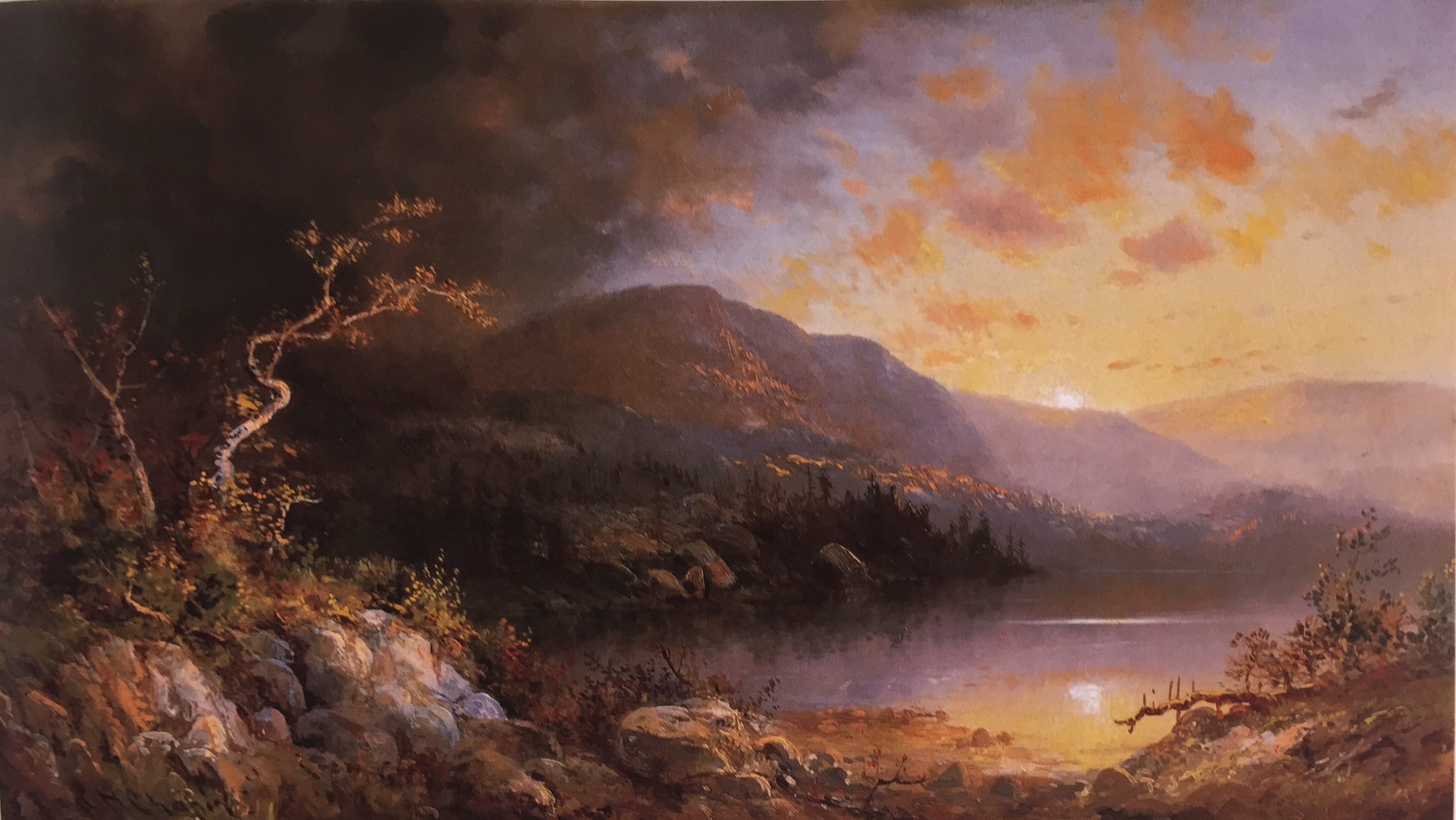
C. H. Chapin, Storm in the Adirondacks, c. 1870, oil on canvas, courtesy Westmoreland Museum of American Art
All That Is Glorious Around Us: Paintings from the Hudson River School
Curated by Judith H. O'Toole
October 21, 2001 — December 15, 2001, January — May 18, 2002
Morgan Anderson Gallery, Howard Greenberg Family Gallery, Sara Bedrick Gallery, and Corridor Gallery
The Hudson River began to figure prominently in the artistic consciousness of the nineteenth century when the painter Thomas Cole journeyed up its waters in the summer of 1825. He settled at Catskill on the Hudson and became the model for other American landscape painters, thus launching the Hudson River School and its romantic, idealized vision of the American Landscape.
This unique exhibition explores the richness and diversity of nineteenth-century American landscape painting. Drawn from a comprehensive private collection, the exhibition includes important works by artists well-known for their association with the School; Thomas Cole, John F. Kensett, Sanford Gifford, Frederic Church, William Trost Richards, and Worthington Whittredge. Of particular interest is the work of many lesser-known artists including that of women such as Eliza Greatorex, Mrs. A. T. Oakes, Laura Woodward; forgotten masters John H. Carmiencke and Regis Gignoux; and the most illustrious African-American artist associated with the school, Robert Duncanson.
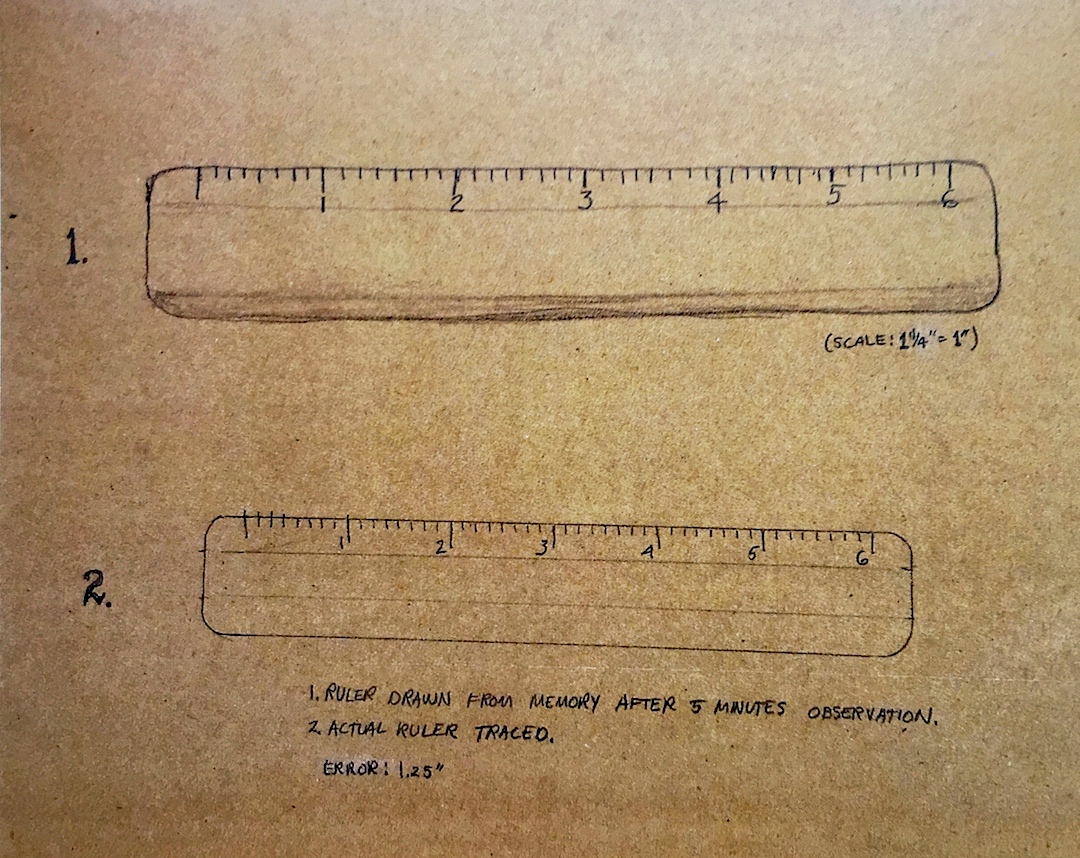
Robert Morris, Ruler Drawn from Memory After 5 Minutes Observation and Actual Ruler Traced, 1962, courtesy the artist
Robert Morris
Curated by Nadine Wasserman
October 6 – November 18, 2001
Alice and Horace Chandler Gallery & North Gallery
Robert Morris has been described as one of the most influential artists of the last forty years. This exhibition will include a survey of drawings from the 1960s through the 1990s as well as a video projection of his re-staged early performances. It will be the first in an annual series of one-person exhibitions that will highlight the work of prominent artists who currently live and work in the Hudson Valley and Catskill regions.
Presenting work by Robert Morris is an appropriate beginning for this unique series because of his central role in contemporary art history. As a pioneer in early Minimalism, Conceptual Art, and Process Art, he has produced work in a wide range of media including sculpture, performance, earthwork, drawing, and painting. Morris' work over the past few decades has explored such issues as scale, perception, death, time, and the evolution of form. He continues to investigate these same ideas throughout his chosen mediums. According to Thomas Krens, Director of the Guggenheim Museum, Robert Morris' entire oeuvre is a single work. Beginning with his earliest work, such as Box with the Sound of Its Own Making (1961), Morris was grappling with issues relating to the role the of the artist, the process of making art, the physical presence of the material, the laws of nature, infinite regress, actuality, gestalt, and anti-form.
Morris' versatility is his strength. Early in his career he became involved in dance and was inspired by experimental work taking place in New York by dancers such as Yvonne Rainer. In response to the balletic gesture, Rainer studied ordinary movement and improvisation as a means to express a more populist form of communication in direct opposition to what she felt was a private, subjective, highly interpretive and therefore exclusive language. Morris' early performances, like his objects, examined the nature of being, anonymity, and the definition of self.
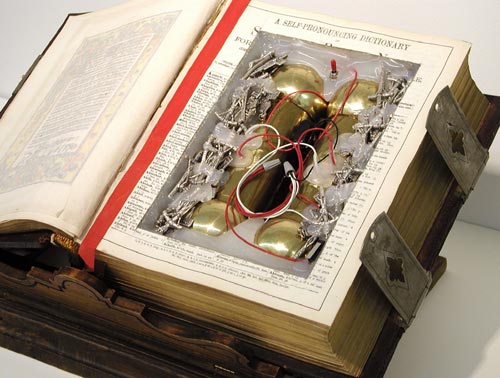
Gregory Green, Bible Bomb #1890, 2000, mixed media, courtesy Feigen Contemporary, New York
In Cold Blood: Sites of Conflict: Art in a Culture of Violence
Curated by Nadine Wasserman
August 13 – September 23, 2001
Alice and Horace Chandler Gallery & North Gallery
Every other year, the School of Fine & Performing Arts at SUNY New Paltz organizes a national Arts Now conference on an issue of contemporary art and culture. The coming conference entitled Sites of Conflict: Art in a Culture of Violence, will examine and explore the relationship of art to violence including spectacle, witnessing and testimony, sites and memorials of conflict, sanctioned violence, and violence and race, class, and gender, and other topics.
This companion exhibition presents work that uses the subject of violence to explore the fine lines that exist between provocation, documentation, celebration, and critique, and will further examine the aesthetics of violence. The work included is unsettling because it is suggestive rather than merely graphic and its meaning is not easily discernable. The imagery is not necessarily conclusive and depending upon the viewer's personal perspective interpretation may shift.
Included in the exhibition are the works of painters Leslie Wayne and Kojo Griffin; multimedia artists Robert Beck, Willie Doherty, Rico Gatson, Kendell Geers, Gregory Green, Alfredo Jaar, Bradley McCallum, and Jacqueline Tarry; and photographers Lucinda Devlin and Bülent Sangar.
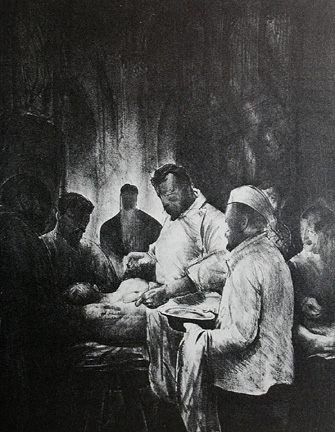
George Bellows, Base Hospital, from the "War Series", 1918, lithograph on paper, courtesy Morgan Anderson Consulting, New York City
With my Profound Reverence for the Victims: Lithographs and Drawings by George Bellows
Curated by Wayne Lempka and Neil Trager
August 13 – September 23, 2001
Howard Greenberg Family Gallery
In the spring of 1918, the american painter, George Bellows began a series of lithographs that focused on the atrocities committed by the germans in Belgium during the first World War. Although Bellows did not witness the crimes of war, he was moved to create this series in response to an article that appeared in the new york times in 1914 (the Bryce report, based on more than twelve hundred eyewitness accounts of the invasion) and a series of articles by Brand Whitlock that appeared in everybody's magazine in 1918. Profoundly affected by these detailed reports, Bellows resolved to give visual expression to that which he read. After completing the suite of lithographs and related drawings, the artist also created five large-scale oil paintings derived from the works on paper. The entire war series comprises twenty lithographs, the five oils, and more than thirty related drawings.
In an exhibition of the prints held in 1918 at Keppel & Co., Bellows prefaced it thusly:
In presenting these pictures of the tragedies of war, I wish to disclaim any intention of attacking a race or a people. Guilt is personal not racial. Against that guilty clique and all its tools, who let loose upon innocence every diabolical device and insane instinct, my hatred goes forth, together with my profound reverence for the victims.
This exhibition, developed from the collection at Morgan Anderson Consulting (NYC) and the artist's estate, includes prints and drawings from the "War Series", and six rarely seen lithographs by Bellows that comment strongly on personal and institutionalized violence experienced in the United States in the early twentieth century.
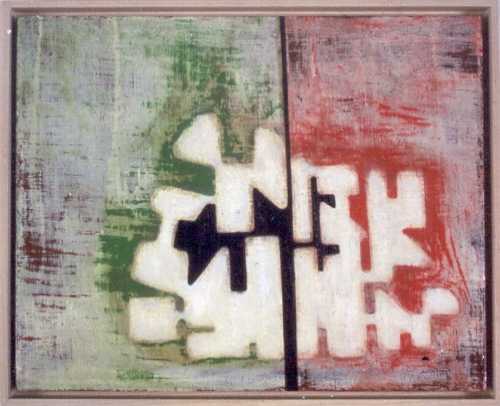
Thomas Nozkowski, Untitled, 1994 (7-55), oil on linen on panel, courtesy the artist
An Autobiography: Paintings by Thomas Nozkowski and Photographs by Judy Linn
Curated by Nadine Wasserman
July 21 – September 30, 2001
Sara Bedrick Gallery
Between 1992 and 1995, Thomas Nozkowski created a series of autobiographical abstract paintings based on geographic regions along the Hudson River. He writes: "Everything that I hold important to my life has happened along a hundred-mile stretch of the Hudson River valley." For each painting I would try to find visual images from my memories and in the physical reality of the place."
The twenty works in An Autobiography reflect important experiences and memories in Nozkowski's life. Each painting is defined by a different five-mile increment of the valley. The artist recalls: "Everything that I hold important to my life has happened along a hundred-mile stretch of the Hudson River valley. For each painting I would try to find visual images from my memories and in the physical reality of the place." After finishing the series, Nozkowski invited Judy Linn to interpret the region in photography. Working without having seen the paintings, Linn's photographs are also defined by the same five-mile increments.
Peter Schjeldahl, art critic for The New Yorker said "Nozkowski's deployment of staggeringly various painterly techniques and tropes beg[s] formal analysis, which functions by identifying patterns of repetition and resemblance. Every detail of a Nozkowski feels ad hoc, thus unrepeatable, and resembles nothing but itself. To grapple with specificities of shape, color, or execution in this work is like trying to catch a thrown beachball while holding a beachball."
While Nozkowski's paintings are intentionally left open for viewer interpretation, Linn's photographs ground the abstract paintings by providing what art critic Joy Hakanson Colby calls "deceptively simple, black-and-white images" depicting the same sites that inspired Nozkowski's work. This dualistic representation, on the one hand emotional and boundless and on the other rational and definite, inspires thoughtful contemplation of both artists' work.
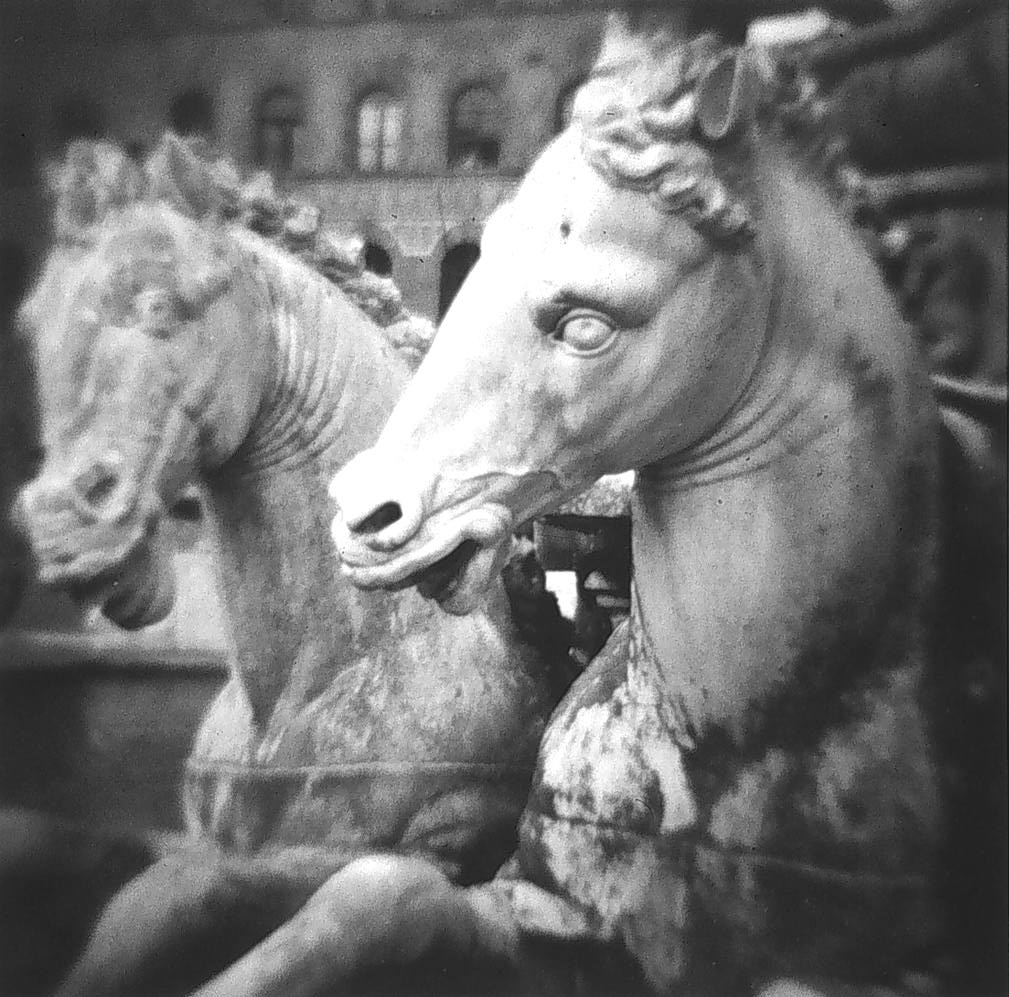
Eric Lindbloom, Horses, Florence, 1979, gelatin silver print, 1995.005.002
Eric Lindbloom: The River That Runs Two Ways
Curated by Wayne Lempka and Neil Trager
July 21 – September 20, 2001
Seminar Room
A selection of panoramic photographs of Hudson Valley landscapes, accompanied by poetry by Nancy Willard. The photographs and poems comprise a limited edition book recently published by the Brighton Press, which also will be on exhibition in the museum.
Eric Lindbloom and Nancy Willard have been exploring the Hudson River Valley surrounding their home in Poughkeepsie, New York, for thirty-five years. The River That Runs Two Ways is the result of many journeys taken and impressions registered by the poet and the photographer in the landscape they know so well. Lindbloom shot the images for the project with a Widelux camera. This unusual camera shoots only panoramic images with a lens that rotates across a 180° plane. The rotation of this lens creates an image with no distortion such as would be achieved with a wide angle or fish eye lens.
The collection of images and poems comprising The River That Runs Two Ways was designed, printed, and bound in an edition of fifteen. The idea of the book as art is a contemporary one that addresses the aesthetic of the page. It has developed and gained increasing visibility during the last twenty years in America. For The River That Runs Two Ways, Lindbloom printed photos archivally and with an extraordinary attention to detail. Text has been handset and printed by traditional letterpress on handmade paper that was custom-made for the project. The books have been bound by hand and housed in a cloth-covered enclosure.
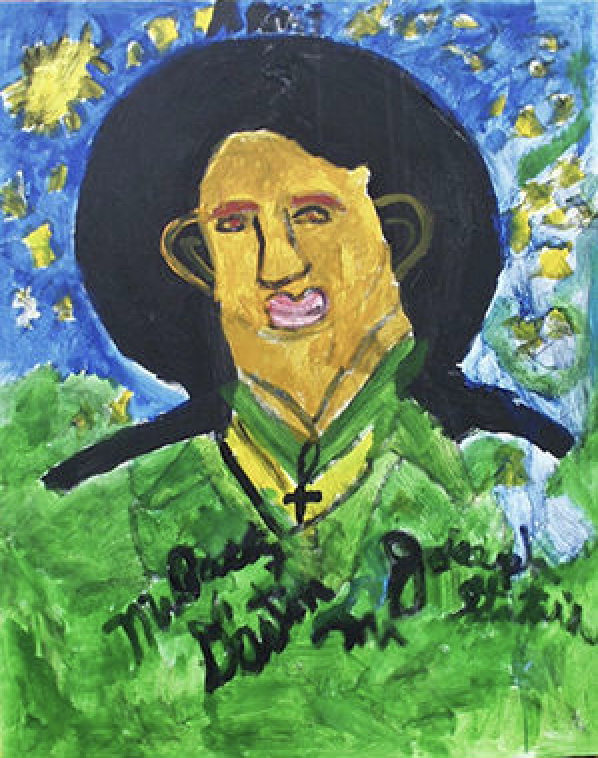
Patricia D'Arton, My Father, 2000, acrylic on canvas, courtesy the artist
Amazing Art: A Celebration of Consciousness
Curated by Bill Richards
June 4 – July 20, 2001
Alice and Horace Chandler Gallery & North Gallery
This exhibition presents artwork made by Bill Richards, Director of the Art Studio Program, and artists from the Northeast Center for Special Care, an inpatient special-care facility designed to serve medically-complex and multiply-impaired individuals with brain injury, neurological diseases, neurobehavioral challenges, complex medical recovery, and ventilator dependency. The majority of the Center's artists have Traumatic Brain Injury and/or Spinal cord Injury, both of which are disorders of major public health significance often having lifelong impairment of physical, cognitive, and psychosocial functioning.
This exhibition is a powerful demonstration of art utilized, not as a tool of commerce, but as a vehicle for meaningful creative explorations. Richards believes that creativity is the flip side of tragedy and that meaning can be restored to the disabled through the accomplishment of creating art. Art produced by these individuals achieves a high level of accomplishment by manifesting profound experience into amazing visual expressions.

BFA/MFA Thesis Exhibitions Spring 2001
Curated by art faculty and students
April 28 – May 2, 2001
Alice and Horace Chandler Gallery & North Gallery
At the end of each semester, students graduating with Bachelor of Fine Arts or Master of Fine Arts degrees exhibit art work created as part of their thesis projects in the museum's west wing. Exhibitions are designed and installed by the students, under the supervision of the Curator of Exhibitions and the museum Preparator.
Nisha Bansil | Mark Errol | Felicia Flanagan | Danielle Astryd Fonseca | Lyle French | Nathan Ganio | Amanda R. Garlinghouse | Emma Hipkens | Jennifer Jeglinski | Devin Jimmink | Teegan Kennedy | Teal Linardakis | Irit Reinheimer | Shoshona Snow | Devon Thomas | April Elizabeth Warren
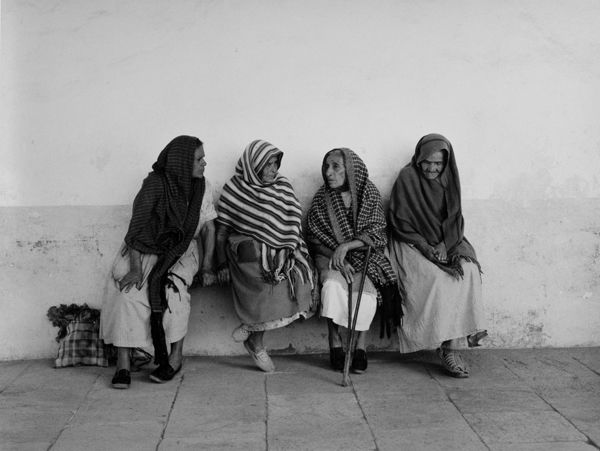
Mariana Yampolsky, Esperando al padrecito, 1987, gelatin silver print, Center for Photography at Woodstock
Engaging Pictures: Aesthetic Choices from the Center for Photography at Woodstock
Curated by Nadine Wasserman, Wayne Lempka, Barbara Ehlers, and David Cavallaro
March 31 – July 8, 2001
Sara Bedrick Gallery
This photographic exhibition used important works from the CPW collection to explore the notion of an "aesthetic" and to exposethe behind-the-scenes choices that are made when designing an exhibition. By introducing various philosophical ideas that challenge the notion of aesthetics and by making clear that aesthetic choices are often subjective, this exhibition functioned as an educational tool, guiding the visitor to make some of his or her own decisions.
According to Nicolas Serota, Director of the Tate Gallery: "The best museums of the future will...seek to promote different modes and levels of "interpretation" by subtle juxtapositions of "experience"... [W]e still need a curator to stimulate readings of the collection and to establish those "climatic zones" which can enrich our apprectiation and understanding...to generate a condition in which visitors can experience a sense of discovery in looking at particular paintings, sculptures or installations in a particular room at a particular moment, rather than find themselves standing on the conveyor belt of history."
This strategy embodies the museum's educational mission. While museums in general have an important role in providing educational services to visitors, university museums have a unique advantage since they already exist within an institution dedicated to higher learning. In college, students are exposed to a wide range of ideas, a variety of disciplines, and multiple resources. They acquire the skills necessary for their own intellectual and emotional growth. If the university has performed its job well, it will have promoted a life-long desire in the students for a continual pursuit of knowledge. In its first years of existence the new Samuel Dorsky Museum of Art will be exploring its role for the campus and for the communicty. By making some of the mechanisms of exhibitions production transparetn, we can provide the visitor with tools to make his or her own critical assessment of the material we have presented. In this way we can also begin to grapple with definition and roles of museums in general, as we move into a new century.

George Wesley Bellows, Roumanian Girl, 1921, oil on canvas, bequest of Edward Coykendall, 1957.001.001
Building for Art: Tradition, Transition, Vision
Curated by Neil C. Trager
March 3 – September 15, 2001
Morgan Anderson Gallery
An exhibition surveying approximately sixty years of collecting art at SUNY New Paltz, Building for Art highlights some of the Museum's finest acquisitions. The exhibition traces the significant role that patronage has played in the creation of the permanent collection and the metamorphosis of the College Art Gallery into the Samuel Dorsky Museum of Art.
Through a comprehensive survey of its content, this exhibition looked at the important roles that leadership and patronage have played in defining it. The exhibition also celebrates the unique public and private partnership--initiated by the uncommon generosity of Samuel Dorsky--that has created the museum. Located at the geographic center of SUNY New Paltz, the Samuel Dorsky Museum of Art (SDMA) opens its doors to the public with an exhibition that proudly acknowledges the 60-year tradition of collecting art on campus, honors donors to the collection, and articulates the pather that we are charting for the future.
